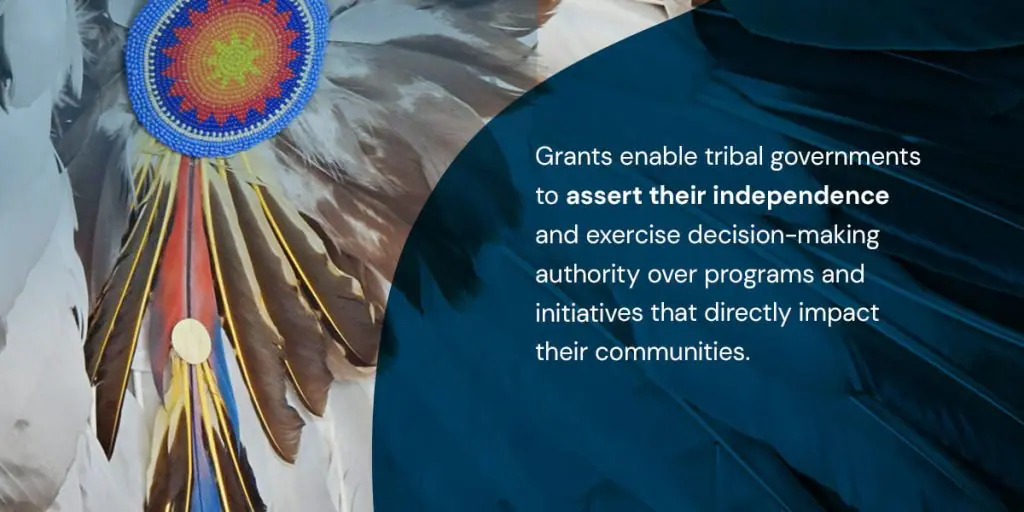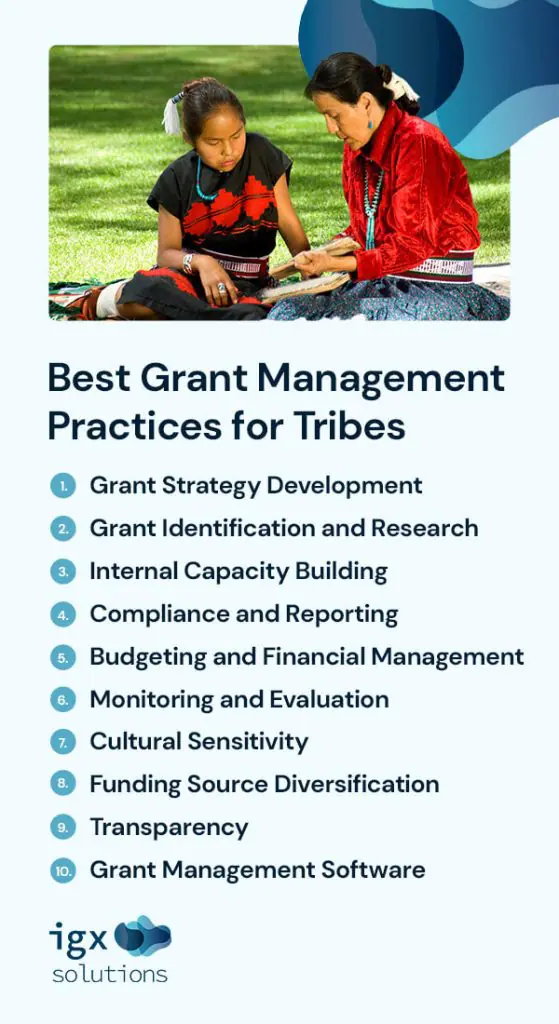

Grant management is essential to tribal governments’ journey toward sustainable development. Securing and effectively using grants allows groups to address pressing challenges, uplift communities and preserve cultural heritage. Understanding tribal government grant management helps you maximize your grant opportunities, bringing critical funding to your community.
Let’s look at grant management for tribal governments and the challenges, tips and best practices that come with this area.
Grant management for tribal governments is more than just a financial process — it’s a powerful tool for exercising self-determination. Through grant management, tribal governments gain the resources and autonomy necessary to provide essential services, preserve traditions and foster economic development within their communities. It’s a way for tribal governments to assert their sovereignty, empowering themselves to address the complex issues they face.
The tribal government grant management path is complex. On one hand, it enables tribal nations to secure vital resources and take control of their development. On the other hand, it poses challenges like fierce competition for limited funding, regulatory complexities and the need for effective administration.
Through these challenges, opportunities for growth, self-reliance and empowerment emerge. With the right grant management practices and software, tribal governments can juggle multiple funding sources while growing their community support.
Tribal grants bridge the gap between the resources needed for holistic community development and the capacity of tribal governments to provide for their citizens. These grants are financial, material or technical resources provided to tribal governments by various entities, including federal and state governments, private foundations and nonprofit organizations. With grant funding, tribal governments can carry out essential initiatives and support for their communities.
Grants help tribal governments to:

Tribal governments have access to a diverse range of grants, each serving distinct purposes and originating from various sources. Tribal grants can include:
Understanding the grant types available is fundamental for tribal governments as they formulate their grant-seeking strategies. This understanding enables them to choose their most appropriate funding sources, aligning their grant applications with community priorities and values.
Tribal governments face many unique challenges in pursuing and managing grants to support their communities. Understanding these challenges will help you better prepare for them. Your community will be better equipped to manage grants and any issues that might show up with a comprehensive understanding and preparation.
Here are some common challenges in the tribal government grant space:
Managing tribal grants effectively requires careful planning and using the best practices. From funding diversification and grant management to cultural sensitivity and transparency, these practices provide tribal governments with the strategic framework needed to navigate grants.
Here are some essential management practices to help you succeed in the grant world:

Develop a comprehensive grant strategy that aligns with the tribal government’s goals and priorities. This strategy should outline the types of grants to pursue, funding sources and long-term objectives.
First, assess community needs and set clear, measurable goals. Allocate necessary resources and prioritize grants that align with milestones to ensure you stick to the deadlines. A robust grant strategy empowers tribes to proactively address pressing issues, maximize grant impact and advance their goals.
Thorough grant identification and research are fundamental to grant success. Continuously research and identify grant opportunities that match your tribe’s needs and objectives. Ensure all eligibility points and other requirements are met. Use online databases, government agencies and grant newsletters to stay informed. Diligent research enables tribes to identify promising grant opportunities and increase the likelihood of successful funding.
Internal capacity building is essential for tribal governments in grant management. Build internal capacity by training staff members in grant management, compliance and reporting. Equipped staff are better prepared to handle the complexities of grant processes.
Providing the necessary infrastructure and resources while fostering knowledge-sharing further enhances capacity. Having a dedicated grant management team can also streamline the process. Consider training a dedicated grant team or using an outside service to grow your grant management capabilities.
Establish rigorous compliance and reporting processes to meet grant requirements. Maintain meticulous documentation throughout the project. Create a timeline for reporting and documenting all grant-related activities and expenditures.
Make sure to stick to these timelines to prevent potential penalties or funding loss. The better your tracking and data collection, the better your compliance and reporting.
Effective budgeting is pivotal. Develop a detailed budget for each grant, accounting for direct and indirect costs. Ensure you have systems in place to track expenditures accurately.
Each budget should be comprehensive and aligned with grant requirements. Additionally, timely financial reporting maintains trust with grant providers. Implement financial controls, like audits and documentation, to prevent mismanagement.
Regular monitoring and evaluation gauge the success of grant-funded projects. Implement a robust monitoring and evaluation system to assess the grant-funded projects’ progress and impact. Collect data and evidence to support your reporting requirements. This data informs decisions for ongoing and future projects, while outcome reporting demonstrates the grants’ tangible impact on tribal communities.
Ensure grant-funded projects are culturally sensitive and respect tribal traditions and values. Look for grants that meet tribal government goals while still honoring and respecting tribal traditions, values and customs. This may involve consulting with tribal elders and cultural experts, who can help ensure the projects align with cultural heritage and promote authenticity and community cohesion.

Don’t rely on a single grant source. Diversify your funding streams to reduce dependency on a specific grant or funding agency — doing so mitigates risk and enhances financial stability. Exploring various sources, including state, federal, private and philanthropic grants, reduces vulnerability to funding fluctuations. Diversification empowers tribal governments to adapt to changing circumstances and maintain a consistent commitment to community development.
Transparency is a foundational principle in grant management. Maintain transparency in grant activities within the tribal government and with grantmakers. Transparency involves clear and open communication while fostering trust and accountability. Implementing comprehensive reporting and documentation allows you to uphold transparency, ensuring grant funds are used responsibly and ethically to benefit the community.
Consider using grant management software or tools to streamline the application, tracking and reporting processes. This software centralizes data, automates workflows and facilitates collaborations among team members. It enhances efficiency, reduces errors and helps tribal governments manage multiple grants simultaneously.
With software templates, calendars for important deadlines and consolidated grant information, you’ll maximize your grant opportunities and avoid missing out. Embracing technology through grant management software ensures valuable resources are used optimally for community development.
There are several tips you can use to help increase your chances of securing funding. Combining quality tips with best grant management practices will help you nail down the small details that can make a significant difference in your grant management success.
Here are some tips to help you boost your grant approval and management success:

If you want to revolutionize your grant management process, make IGX Solutions your trusted partner. We’ve designed our cutting-edge grant management software to empower tribal communities by streamlining grant acquisition, tracking and reporting. With IGX, you can ensure cultural sensitivity, funding source diversification and transparency while effectively managing grants of all types.
Ready to see our software in action? Book a demo with us today and discover how IGX solutions can transform your grant management efforts. We’ll help you secure the resources needed to drive sustainable development and community well-being. Don’t miss out — explore grant management optimization with IGX Solutions.